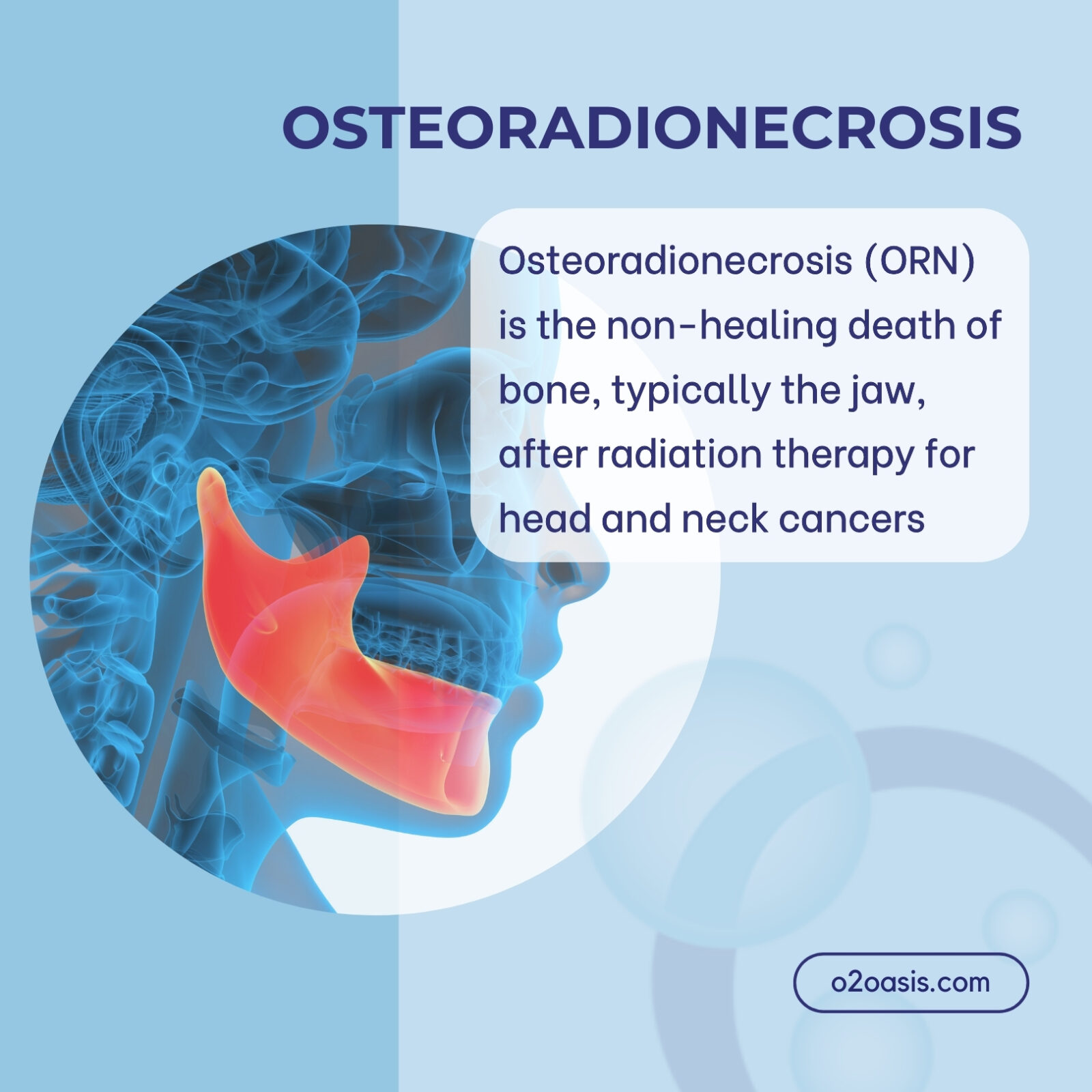
Healing After Radiation: The Role of Hyperbaric Oxygen Therapy in Osteoradionecrosis Recovery
Understanding Osteoradionecrosis
Osteoradionecrosis (ORN) is a serious condition that can develop after radiation therapy, most commonly affecting the jawbone. Radiation can compromise blood flow and tissue health, leaving bone and surrounding tissues vulnerable to breakdown. Patients may experience chronic pain, delayed healing, infection, and even bone exposure. Because the affected tissues lack oxygen and blood supply, standard wound healing is often not enough.
What Is Hyperbaric Oxygen Therapy?
Hyperbaric oxygen therapy (HBOT) involves breathing 100% oxygen in a pressurized chamber. This process increases the amount of oxygen dissolved in the bloodstream, which then delivers it to damaged tissues. Elevated oxygen levels promote new blood vessel growth, reduce swelling, enhance immune function, and accelerate wound healing.
How HBOT Supports Healing in Osteoradionecrosis
In osteoradionecrosis, bone tissue has been damaged by radiation and lacks the oxygen and blood flow needed to repair itself. HBOT addresses this directly by:
- Increasing oxygen delivery to the jawbone and soft tissues.
- Stimulating angiogenesis, or the growth of new blood vessels.
- Enhancing the body’s immune response to reduce infection.
- Improving tissue quality, making surgery or dental procedures safer and more successful.
Many treatment protocols recommend multiple HBOT sessions before and after surgery to optimize healing. This combination approach has been shown to reduce the risk of further bone necrosis and complications.
What to Expect During Treatment
A typical HBOT session lasts about 90 minutes. Patients relax inside a specialized chamber while breathing pure oxygen under increased pressure. Most treatment plans involve 20–40 sessions, depending on the severity of the osteoradionecrosis and any planned surgical procedures.
Side effects are usually minimal, though some people may experience temporary ear pressure or mild fatigue after sessions. The therapy is well tolerated and monitored by trained medical professionals.
Clinical Benefits and Evidence
Multiple studies and clinical guidelines support the use of HBOT in managing osteoradionecrosis. It can:
- Improve wound healing outcomes
- Reduce the risk of postoperative complications
- Decrease pain and infection rates
- Restore better oral function and quality of life
This makes HBOT an important part of comprehensive care for patients recovering from radiation treatment to the head and neck.
Final Thoughts
Osteoradionecrosis can be a challenging complication, but modern treatments like hyperbaric oxygen therapy offer real hope. By improving oxygenation and blood flow to damaged bone and tissue, HBOT enhances healing, supports surgical success, and helps patients regain comfort and quality of life.
If you or a loved one has experienced radiation-related complications, consider consulting with a Hyperbaric Physician/Medical Director regarding HBOT as part of your treatment plan.